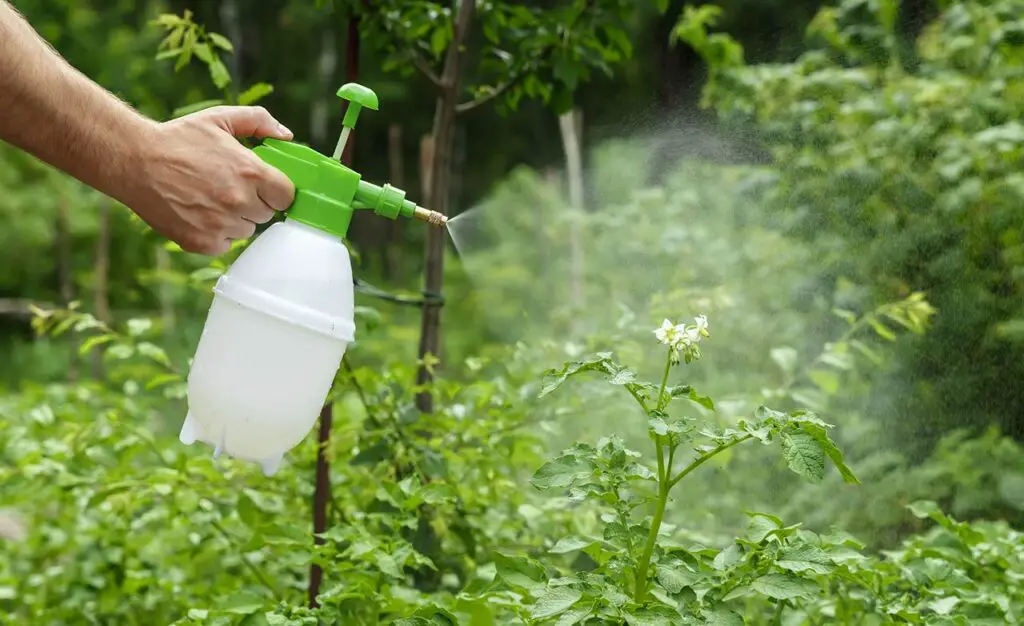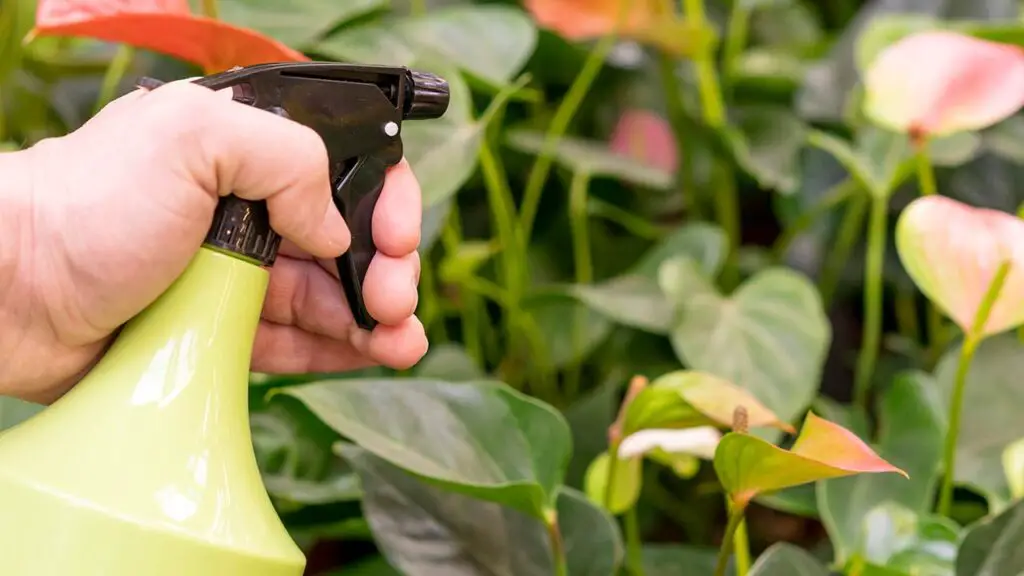Best Time to Apply 2,4-D to Kill Weeds in Your Yard
Most people struggle with weed killer chemicals.
Despite being the most effective at killing weeds, if proper considerations are not taken into account, it might not effectively kill the weeds.
Are you considering applying 2, 4 D to kill weeds in your garden?
If you have dealt with chemicals before and have failed to eliminate the weeds successfully, you are probably wondering about the best time to use 2, 4 D to get rid of weeds from your garden effectively.
In this article, we have discussed everything you would like to know about the use of 2, 4-D in killing weeds.
Read this piece of information to the end and get some tips on effectively using this chemical to kill the weeds.
When Is The Best Time To Apply 2, 4-D To Kill Weeds?

It can be challenging to effectively apply this type of herbicide if you are unsure when the right time is.
The optimal temperature should be 70F and above.
However, above 90F if herbicides are applied, it can harm the plants.
1. Early spring
The best time to apply 2, 4-D herbicides to kill weeds effectively is during early spring.
During this period, the weeds are usually small and actively growing.
The spraying should be done during mid-day when temperatures are above 70 degrees F and are not expected to rain for the rest of the day.
2. Windless day
If you spray during a windy day, most of the chemicals will be carried by the wind, and little will fall on the weeds.
The lesser the chemical sprayed, the lower the impact.
Thus, any day you decide to spray, ensure it is windless.
3. High temperatures
It is best to spray the herbicides when the temperatures are between 70F and 90F.
If sprayed when the temperatures are above 90F, they will burn the crop.
Factors to Consider When Applying 2, 4-D Herbicides

The Humidity level
The moisture level is an essential factor to consider when applying chemical herbicides like the 2, 4-D.
What is the moisture level within the area during the day you plan on spraying the chemicals?
If it is high, the likelihood of it failing is very high.
How does the humidity level affect the effectiveness of herbicides?
Since humidity is the amount of water in the air, too much water will dilute the herbicide concentration, lowering its efficacy.
If the dew is too much, it will run off the whole chemical to undesired areas, rendering it ineffective.
Temperature
Just like most herbicide applications depend on the temperature levels, 2, 4-D is not an exception.
It works effectively under warm temperatures of about 80F and 90F.
If the temperature levels rise above 900F during the herbicide application, this will facilitate temperature inversion, resulting in off-target drifting.
When air is heated, warm air rises and is replaced by cold air from the atmosphere.
The process might continue until the end of the inversion.
By this time, the applied herbicides will have drifted away to unintended areas, negatively impacting those areas while the weeds remain unaffected.
The speed of the wind
If you want the herbicides to eliminate weeds effectively, wind strength is an essential factor to consider.
What is the ideal wind strength?
The range of the wind strength that has been considered ideal ranges between 3 and 7 meters per second.
It will surely interfere with the application process of drifting off to an unintended target if it goes beyond seven.
Similarly, if the speed falls below three meters per second and temperature inversions happen to take place at the time, it will be rendered ineffective.
Also, spray in the wind direction and maintain the same pace as the wind to ensure the herbicide does not drift into the unintended areas.
Nozzle type

The effectiveness of herbicide application also significantly relies on the nozzle type.
Each nozzle is of different sizes with varying droplet sizes.
In turn, it will affect the pressure and the amount of spray coming out at a time.
With the wrong nozzle, you will end up wasting a lot of herbicides or even spraying unintended areas.
However, you can regulate the droplets’ sizes with the correct nozzles, allowing the applicator to have appropriate herbicide coverage.
What is the right nozzle size?
First, both the nozzle and the sprayer should be clean and in proper working conditions.
It should also be properly calibrated before using it.
Soil moisture
It is essential to consider soil moisture when spraying herbicides, especially when the crops are also involved.
It is recommended to spray the 2 and 4-D herbicides when the crops are actively growing.
During this time, the weeds are actively growing, and the herbicides will be absorbed by the minerals and transported down to the roots, destroying the weed.
Boom height
The boom height can also influence the effectiveness of the herbicides and the level of off-target drift when applying them.
A taller boom is likely to experience increased drift.
Similarly, if it is very short, it can result in uneven patterns in the application.
Thus, the relationship between the boom height and nozzle spacing should be one to one.
For best weed control, ensure you follow the manufacturer’s instructions.
With the right information, you will be able to apply the herbicides to the intended weeds effectively.
How to Apply 2, 4-D Herbicides

While every type of herbicide is best suited for eliminating a particular weed, with 2, 4-D, you will effectively eliminate all the weeds on the farm.
Despite killing weeds only, it is recommended to spray it before planting as it has the potential of destroying your flowering crops, fruits, and vegetables.
The best way to go about applying the herbicides is by wearing the necessary protective gear.
The most important areas to cover are your eyes, nose and mouth, hand and legs, and chemical-resistant gear.
You can protect the overall body by wearing a chemical-resistant apron.
Following the manufacturer’s instructions, mix the chemicals in the correct ratios.
Also, remember to add some amount of liquid dish soap to the solution.
Attach the spray nozzle to the tank and start spraying.
With pressure set at 20 pounds per square foot, continue spraying at the speed of about 3 and 7 meters per second.
Apply both at the top and the bottom of the leaves.
What Are The Safety Measures When Handling 2, 4-D Herbicides?
It is recommended to spray when the temperatures are between 80 and 85 degrees F if you want to spare the grass.
- If you find it challenging to dissolve the 2, 4-D in water, use soft water or warm water.
- Minimize the spray drift at all costs. This can be achieved by spraying during a less windy day when it is not raining and spraying in the wind’s direction.
- Keep animals away from feeding in the area after spraying until herbicides have fully dried.
If you are looking for a weed killer but are unsure of the right one, go for 2, 4-D herbicides as they are a universal weed killer.
Apart from the grass, the rest of the weeds with broad leaves can easily be eliminated by this chemical.
However, for maximum results, ensure you consider the factors like humidity level and temperature levels, among others.